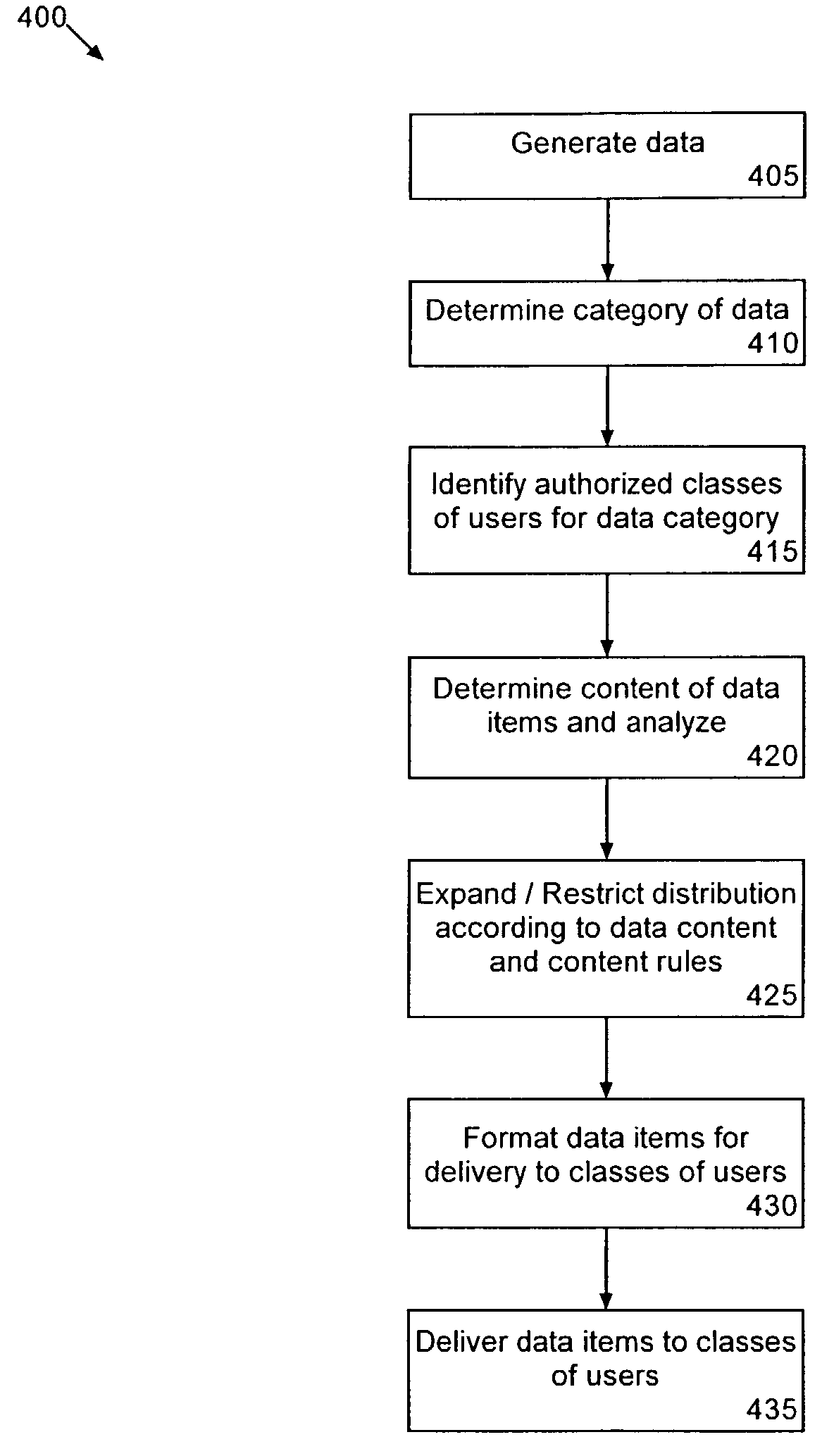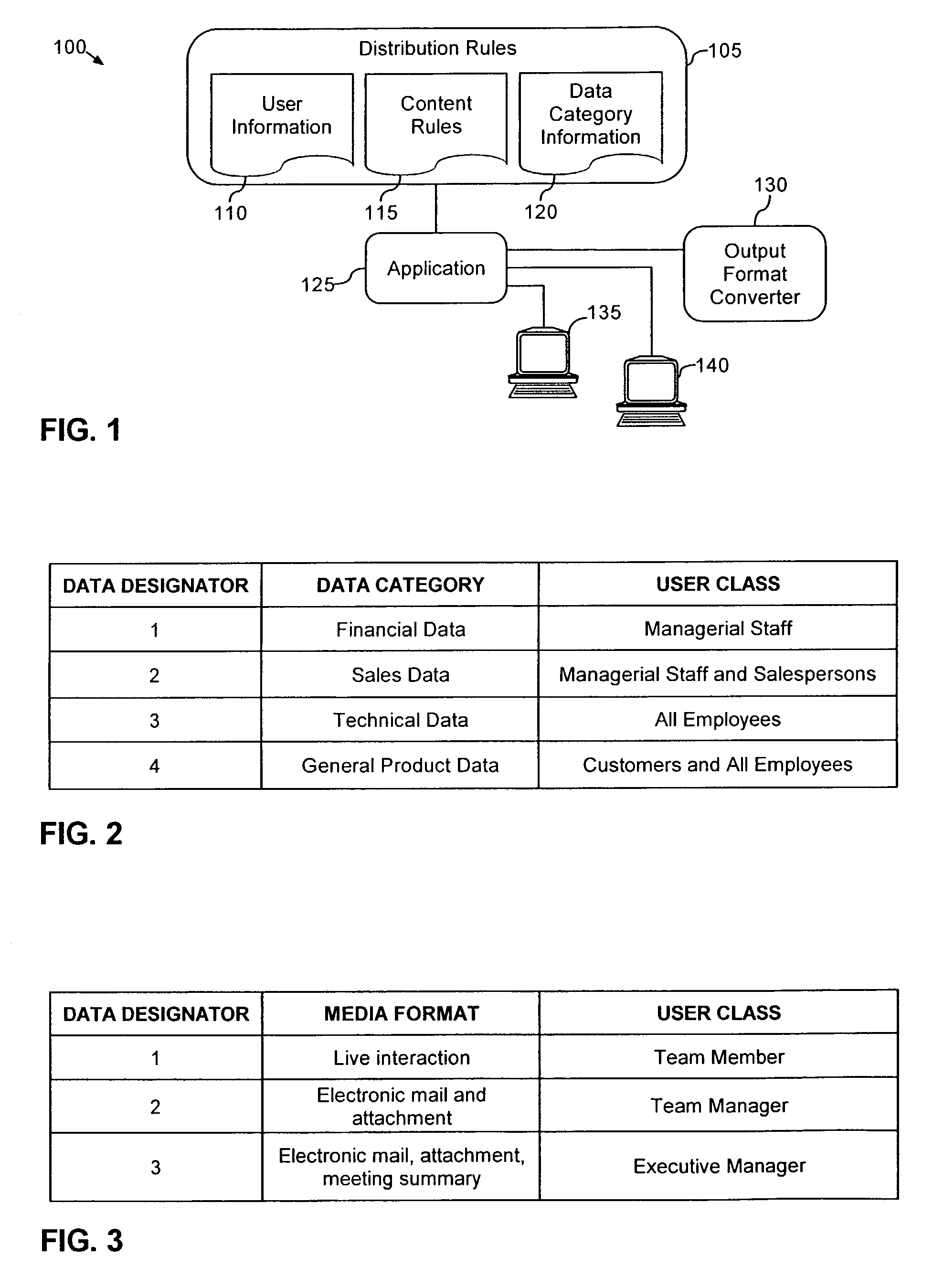Targeted information delivery to multiple users
- Summary
- Abstract
- Description
- Claims
- Application Information
AI Technical Summary
Benefits of technology
Problems solved by technology
Method used
Image
Examples
Embodiment Construction
[0015]The invention disclosed herein provides a solution for delivering targeted information to multiple users. In particular, the present invention provides for the distribution of information to one or more users or classes of users according to the type of information to be delivered. Thus, the present invention not only can deliver selected items of information, but also can deliver those selected items of information to particular users or classes of users. Notably, determinations as to which data items are to be provided as well as to whom those data items are to be provided can be made before, during, and after the information is generated in an application. For example, such determinations can be made dynamically as the information is generated, or shortly thereafter, during a collaboration session or presentation session. Moreover, in addition to distributing data items according to the data item type and the class of user, the distribution of data items can be dependent up...
PUM
 Login to View More
Login to View More Abstract
Description
Claims
Application Information
 Login to View More
Login to View More - R&D
- Intellectual Property
- Life Sciences
- Materials
- Tech Scout
- Unparalleled Data Quality
- Higher Quality Content
- 60% Fewer Hallucinations
Browse by: Latest US Patents, China's latest patents, Technical Efficacy Thesaurus, Application Domain, Technology Topic, Popular Technical Reports.
© 2025 PatSnap. All rights reserved.Legal|Privacy policy|Modern Slavery Act Transparency Statement|Sitemap|About US| Contact US: help@patsnap.com



